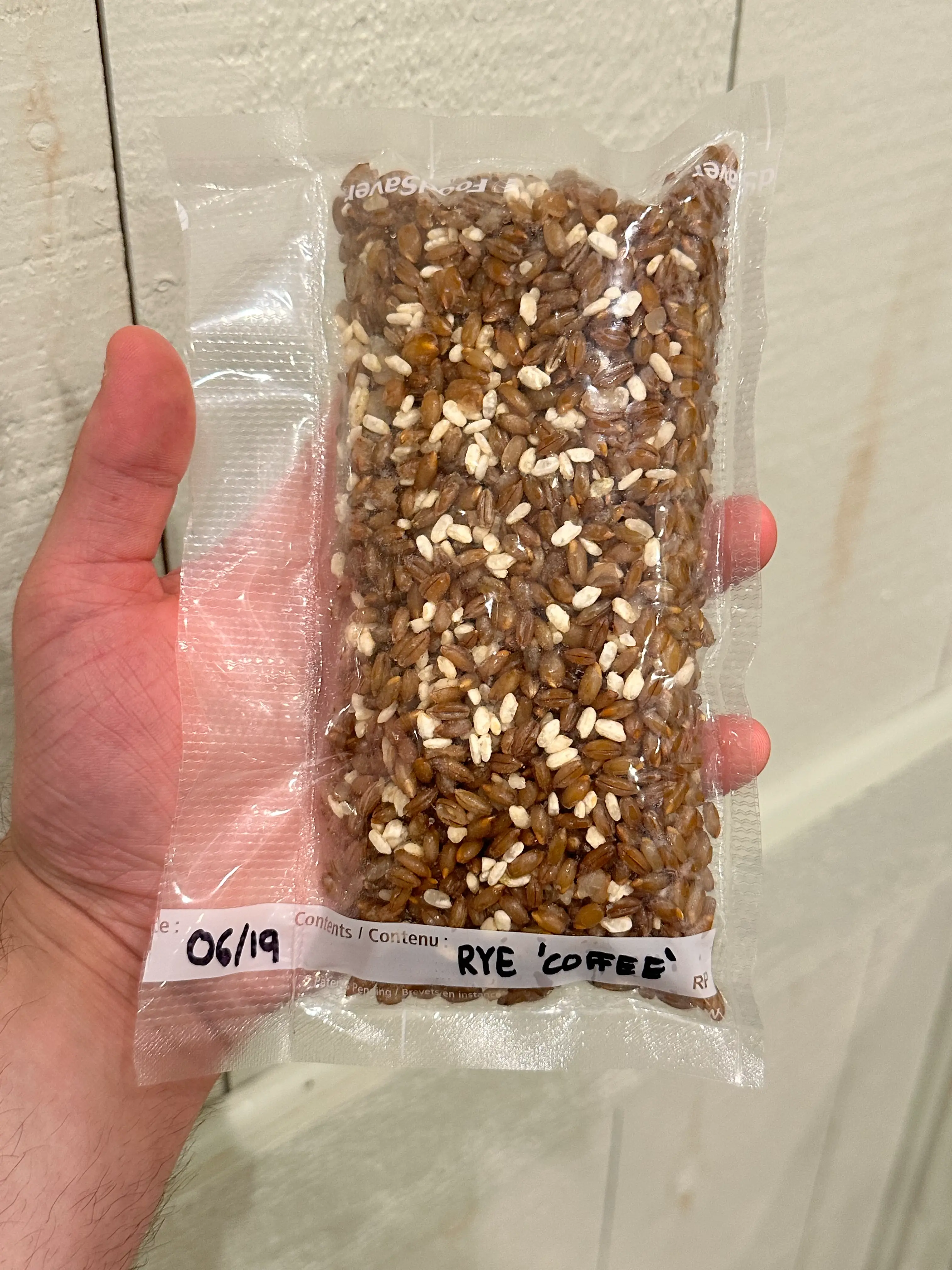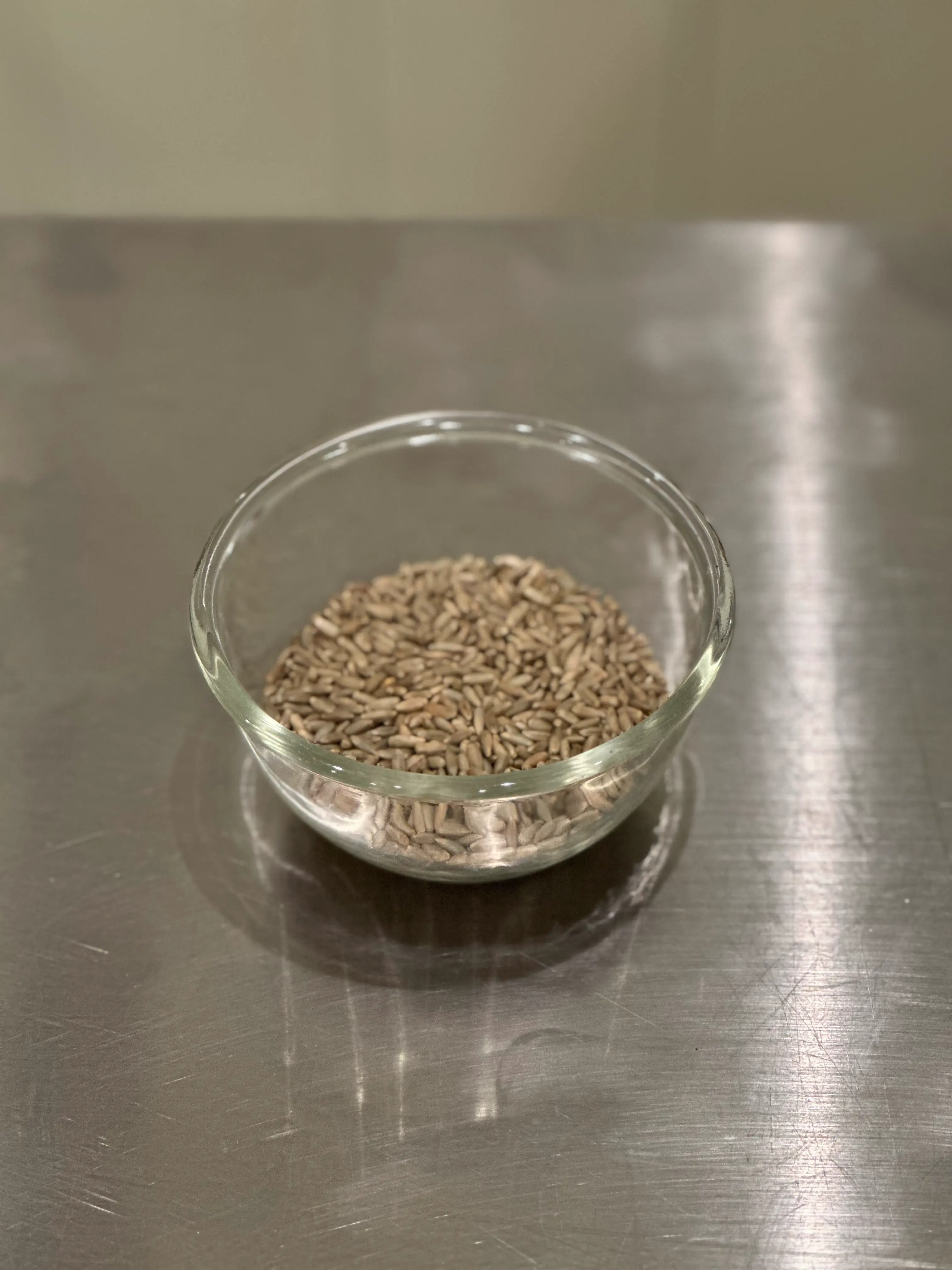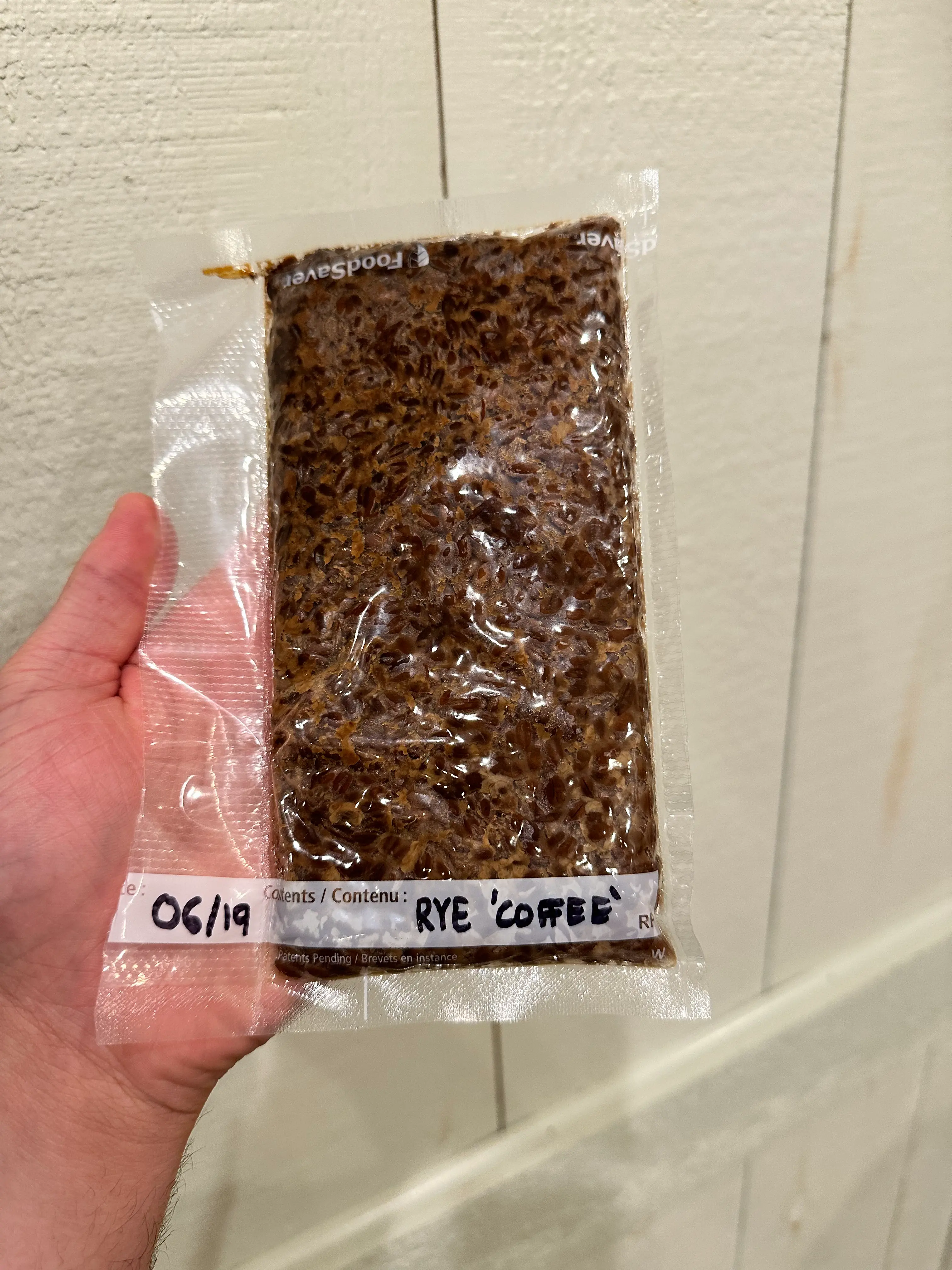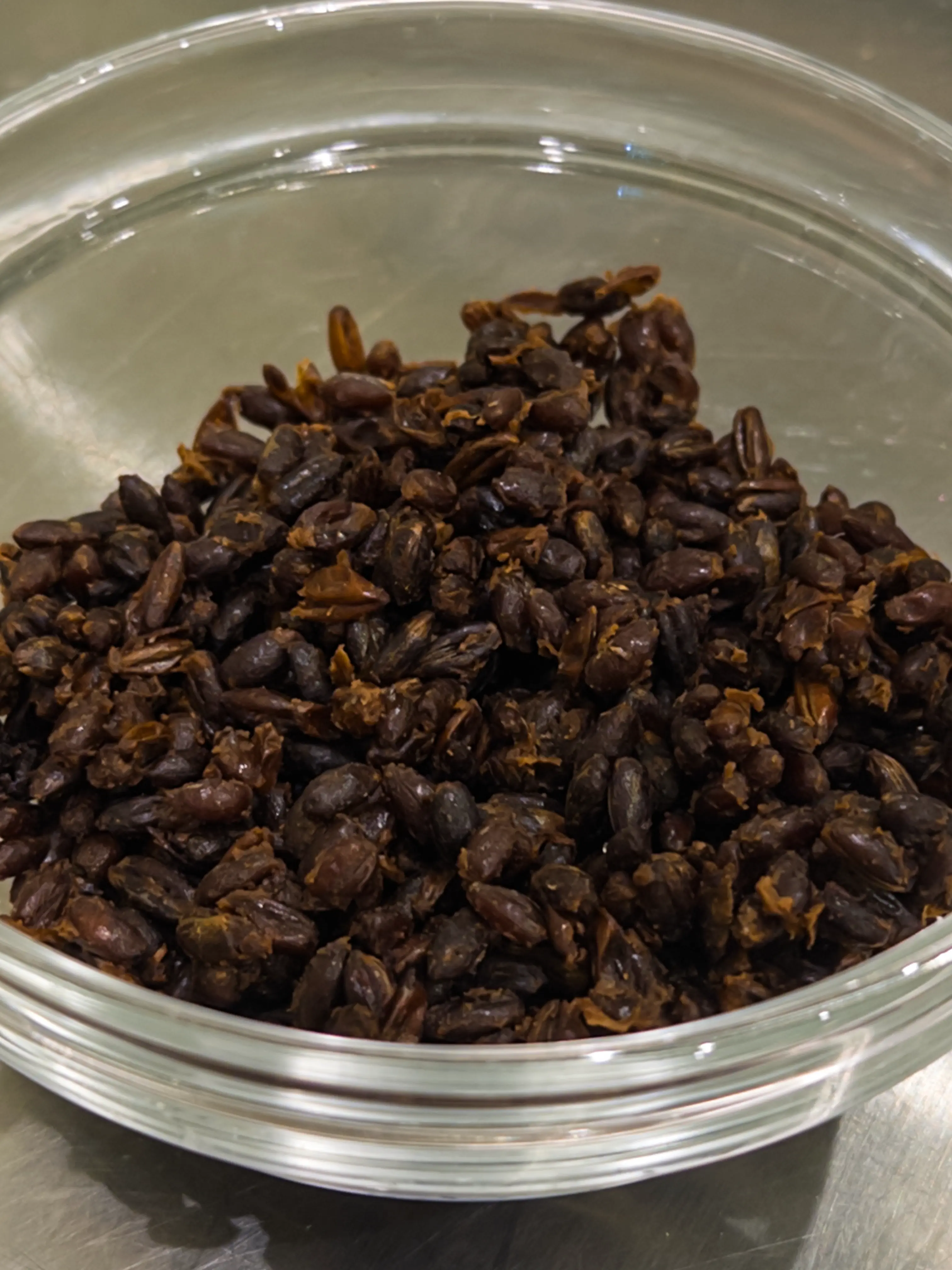Background
This is a test to create alternative coffee and chocolate-like varieties using a combination of koji and slow blackening at 140°F. This approach leverages the similarity between Koji enzymes and the enzymes that develop during coffee and chocolate fermentation. For this initial test, a small amount of dried rye berries from Castle Valley Mill will be used.

Recipe
Ingredients
100g Dried Rye Berries
500g Water
15g Koji
Equipment
Pot
Kitchen Scale

Instructions
-
Preparation
Boil the rye berries in water over medium-high heat until they are soft enough to be easily crushed between two fingers. -
Incubation
Combine the cooked rye with a small amount of Koji and hold at approximately 140°F (60°C). -
Roasting
Once the desired level of blackening is achieved, roast the rye. -
Tasting
Steep the roasted rye to create a beverage and evaluate the resulting flavors.
Notes and Observations
- The process is expected to take between one and three weeks.
- The logic is that as the Koji breaks down starches in the grain into sugar, Maillard reactions will occur, resulting in the blackening of the grain.
- Simultaneously, the proteases in the Koji will break down the rye proteins into their amino acid constituents.
- The goal is to develop amino acid flavor precursors in the rye, similar to how they are developed during the coffee fermentation process. These flavors will be expressed after roasting.


Post-Blackening: Roasting & Brewing
- After blackening, the aged rye was roasted in an oven at 350-375°F for approximately 20 minutes, with frequent mixing. The roasted rye was then ground and prepared in two ways for tasting:
- Instant Coffee-Style: Boiling the grounds directly with water produced a beverage with a coffee-like bitterness. The flavor profile evolved from raisin notes to something more akin to coffee.
- Mocha Pot: This method yielded a cleaner, less fruity taste with a rounder mouthfeel.
- While not identical to coffee, the results are promising and suggest that the roasting process is a critical variable.
Post-Blackening: Chocolate-Style Preparation
- A separate preparation was made by blending the dried, blackened rye with sugar and fat.
- The result was not like chocolate but was delicious and intensely fruity, with strong notes of prune, raisin, and dried currents. There were also subtle chocolate notes and hints of a stone fruit like cherry, with very little bitterness.
- When blended with milk, the mixture tasted remarkably like Ovaltine or a mild chocolate milk with blended raisins. It was very satisfying and comforting.
- This base would be excellent as a warm drink or as an ice cream, perhaps with the addition of something punchy like dried, lacto-fermented fruit.